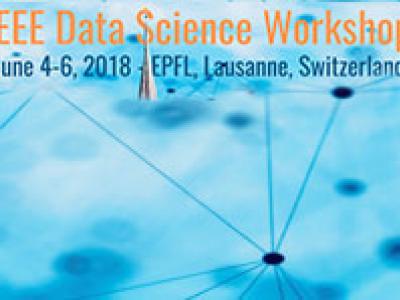Documents
Presentation Slides
Semi-Blind Inference of Topologies and Dynamical Processes over Graphs

- Citation Author(s):
- Submitted by:
- Vasileios Ioannidis
- Last updated:
- 29 May 2018 - 1:31pm
- Document Type:
- Presentation Slides
- Document Year:
- 2018
- Event:
- Presenters:
- Vassilis N. Ioannidis
- Paper Code:
- DSW18001
- Categories:
- Log in to post comments
Network science provides valuable insights across
numerous disciplines including sociology, biology, neuroscience
and engineering. A task of major practical importance in these
application domains is inferring the network structure from
noisy observations at a subset of nodes. Available methods for
topology inference typically assume that the process over the
network is observed at all nodes. However, application-specific
constraints may prevent acquiring network-wide observations.
Alleviating the limited flexibility of existing approaches, this work
advocates structural models for graph processes and develops
novel algorithms for joint inference of the network topology and
processes from partial nodal observations. Structural equation
models (SEMs) and structural vector autoregressive models
(SVARMs) have well-documented merits in identifying even
directed topologies of complex graphs; while SEMs capture
contemporaneous causal dependencies among nodes, SVARMs
further account for time-lagged influences. This paper develops
algorithms that iterate between inferring directed graphs that
“best” fit the data, and estimating the network processes at
reduced computational complexity by leveraging tools related
to Kalman smoothing. To further accommodate delay-sensitive
applications, an online joint inference approach is put forth that
even tracks time-evolving topologies. Furthermore, conditions for
identifying the network topology given partial observations are
specified. It is proved that the required number of observations
for unique identification reduces significantly when the network
structure is sparse. Numerical tests with synthetic as well as real
datasets corroborate the effectiveness of the novel approach.

